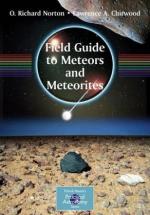|
This section contains 1,814 words (approx. 7 pages at 300 words per page) |

|
Overview
Giuseppe Piazzi discovered the first asteroid, Ceres, on New Year's Day, 1801, then lost it when it traveled behind the Sun. Luckily, a new and valuable mathematical method, least squares, allowed Ceres to be rediscovered. This success established the reputation of Carl Friedrich Gauss, one of history's greatest mathematicians. Just two years later in 1803, the view of the Solar System was further expanded by a study that forced science to accept the idea that space debris came to Earth. French physicist Jean-Baptiste Biot investigated a rock that fell from the heavens, and his report convinced skeptics that meteorites came from space. By the century's end, meteorites were accepted as extraterrestrial in origin, and the first steps were taken toward proving that craters were on Earth as well as on the Moon.
Background
Giuseppe Piazzi (1746-1826) was...
|
This section contains 1,814 words (approx. 7 pages at 300 words per page) |

|


